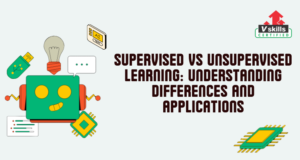Carbon has emerged as a promising newcomer in the ever-evolving landscape of programming languages. Developed as a modern alternative to C++, Carbon aims to address some of the longstanding challenges and limitations of C++. But is it worth investing time and energy in learning this new language?
In this comprehensive guide, we’ll understand the world of Carbon programming. We’ll explore its origins, key features, and potential benefits. We’ll also discuss whether learning Carbon is a worthwhile endeavor for both beginners and experienced programmers.
So, if you’re curious about Carbon or considering adding it to your programming toolkit, join us on this journey to discover whether Carbon is indeed worth learning.
Carbon Programming Language: A Detailed Overview
Carbon is a modern programming language designed to be a more expressive, safer, and easier-to-use alternative to C++. It aims to preserve the performance advantages of C++ while addressing its perceived shortcomings. Carbon is a relatively new language, developed by Google, with a focus on improving the developer experience and enhancing code reliability.
Origins and Development
The development of Carbon was motivated by the desire to address several key issues with C++. These issues included:
- Complexity: C++’s complex syntax and numerous features can make it challenging to learn and use effectively.
- Safety: C++’s manual memory management and potential for undefined behavior can lead to bugs and security vulnerabilities.
- Productivity: The verbosity of C++ can reduce development speed and increase the likelihood of errors.
To address these challenges, Carbon was designed with the following principles in mind:
- Modern Syntax: Carbon adopts a cleaner and more concise syntax, inspired by other modern languages like Rust and Swift.
- Safety: Carbon incorporates features to prevent common programming errors, such as null pointer dereferences and memory leaks.
- Performance: Carbon is designed to be as performant as C++, leveraging techniques like zero-cost abstractions and compiler optimizations.
- Interoperability: Carbon aims to be interoperable with C++ code, allowing developers to gradually migrate existing C++ projects.
While Carbon is still a relatively young language, it has gained significant attention from the programming community due to its potential to improve the development experience and create more reliable, efficient software.
Key Features and Advantages of Carbon
Carbon offers a range of features designed to improve the programming experience and enhance code quality. Some of the key features include:
- Modern Syntax: Carbon adopts a cleaner and more concise syntax, inspired by languages like Rust and Swift. This makes code easier to read, write, and understand.
- Safety: Carbon incorporates features to prevent common programming errors, such as null pointer dereferences and memory leaks. This can improve code reliability and reduce the risk of bugs.
- Performance: Carbon is designed to be as performant as C++, leveraging techniques like zero-cost abstractions and compiler optimizations. This makes it suitable for performance-critical applications.
- Interoperability: Carbon aims to be interoperable with C++ code, allowing developers to gradually migrate existing C++ projects. This can reduce the cost and complexity of adopting Carbon.
- Generics: Carbon supports generics, which enable the creation of reusable code that can work with different data types.
- Patterns: Carbon includes pattern matching features, which can simplify complex conditional logic and make code more expressive.
- Modules: Carbon uses a module system to organize code into reusable components, improving code modularity and maintainability.
Comparison to Other Languages
– Carbon vs. C++:
- Safety: Carbon is designed to be safer than C++, with features to prevent common programming errors.
- Modernity: Carbon has a more modern syntax and features compared to C++.
- Interoperability: Carbon is designed to be interoperable with C++ code.
– Carbon vs. Rust:
- Safety: Both Carbon and Rust focus on safety, but Rust may have a slightly different approach to achieving it.
- Performance: Carbon aims to be as performant as C++, while Rust also emphasizes performance but may have a slightly different focus.
- Syntax: Carbon and Rust have different syntax styles.
– Carbon vs. Go:
- Performance: Both Carbon and Go are designed for performance, but Carbon may have a slight edge due to its closer relationship to C++.
- Concurrency: Go has built-in concurrency features, while Carbon may require additional libraries for concurrent programming.
- Syntax: Carbon and Go have different syntax styles.
Why Learn Carbon Programming?
While Carbon is a relatively new language, its potential for growth and adoption is significant. As more companies and projects begin to adopt Carbon, there is likely to be an increasing demand for skilled Carbon developers. Here are some potential career opportunities in Carbon development:
- Software Engineer: Carbon developers can work on a wide range of software projects, from web applications to systems programming.
- Game Developer: Carbon’s performance and efficiency make it a suitable language for game development.
- Data Scientist: Carbon can be used for data analysis and machine learning tasks, providing an alternative to languages like Python and R.
- Embedded Systems Developer: Carbon’s ability to interact with hardware makes it suitable for embedded systems development.
– Enhancing Your Programming Skills
Learning Carbon can enhance your programming skills in several ways:
- Modern Programming Concepts: Carbon introduces modern programming concepts and best practices, such as safety, concurrency, and generics. By learning Carbon, you can acquire a strong foundation in these concepts.
- Problem-Solving: Carbon’s focus on performance and efficiency can challenge you to think critically and solve complex problems.
- Career Advancement: Proficiency in Carbon can make you a valuable asset in the job market, opening up new career opportunities.
- Transferable Skills: The skills you learn while developing in Carbon, such as software design, algorithms, and data structures, are transferable to other programming languages.
By learning Carbon, you can not only expand your programming skillset but also position yourself for future career growth and success.
Benefits of Carbon for Specific Applications
Carbon’s unique combination of features makes it well-suited for a variety of applications. Here are some specific examples:
- Systems Programming: Carbon’s performance and efficiency make it an excellent choice for systems programming tasks, such as operating systems, device drivers, and embedded systems.
- Game Development: Carbon’s low-level control and performance can be leveraged to create high-performance games.
- Data Science and Machine Learning: Carbon’s ability to handle large datasets and perform complex computations makes it a viable option for data science and machine learning applications.
- Web Development: While not as widely used as languages like JavaScript and Python, Carbon can be used for web development, especially for backend services and APIs.
– Addressing Common Concerns and Misconceptions
As a relatively new language, Carbon may face some common concerns and misconceptions. Here are some of them:
- Maturity: Some may question Carbon’s maturity and stability due to its relatively short lifespan. However, Carbon is actively developed and has a growing community of users and contributors.
- Adoption: Carbon may not have the same level of adoption as more established languages like C++ or Python. However, its potential benefits and growing popularity suggest that it could become a more mainstream language in the future.
- Learning Curve: Some may find Carbon’s learning curve to be steep, especially for those who are new to programming or C++. However, the language’s design aims to make it easier to learn and use than C++.
While Carbon may not be the perfect choice for every application, its unique features and potential benefits make it a language worth considering for a wide range of projects.
Getting Started with Carbon Programming
1. Installing Carbon
Prerequisites:
- A modern operating system like Windows, macOS, or Linux.
- A C++ compiler (e.g., Clang, GCC).
Steps:
- Download the Carbon Compiler:
○ Visit the official Carbon website ([invalid URL removed]) and download the latest compiler release for your operating system.
○ Extract the downloaded archive to a directory of your choice. - Set Up Environment Variables:
○ Add the directory containing the Carbon compiler’s bin subdirectory to your system’s PATH environment variable. This will allow you to run the carbonc compiler from any location in your terminal.
○ For example, on Windows, you can add the directory to the PATH variable in the System Properties control panel. On macOS and Linux, you can edit your shell’s configuration file (e.g., .bashrc, .zshrc) and add the directory to the PATH variable. - Verify Installation:
Open a terminal or command prompt and run the following command:
carbonc –version
○ If the installation was successful, you should see the installed Carbon compiler version.
Note: The specific installation steps may vary slightly depending on your operating system and the version of Carbon you’re installing. Refer to the official Carbon documentation for more detailed instructions.
Once you’ve successfully installed Carbon, you’re ready to start writing and compiling Carbon programs.
Basic Syntax and Structure of Carbon Programs
Carbon programs follow a similar structure to other C-like languages. Here are some key elements:
- Comments: Comments are used to explain code. Single-line comments start with //, and multi-line comments are enclosed in /* and */.
- Keywords: Carbon has a set of reserved words that have special meanings, such as if, else, for, while, int, float, char, etc.
- Identifiers: Identifiers are names given to variables, functions, and other program elements. They must start with a letter or underscore and can contain letters, digits, and underscores.
- Statements: Statements are the basic units of execution in Carbon. They are typically terminated with a semicolon (;).
2. Variables and Data Types
Carbon supports various data types to represent different kinds of values:
- Integer types: int, long, short, unsigned int, unsigned long, unsigned short, char
- Floating-point types: float, double
- Boolean type: bool
- Character type: char
- String type: Carbon has a built-in string type, but its exact implementation may vary.
Variables are used to store values. They are declared using a data type followed by the variable name. For example:
int age = 25;
float pi = 3.14159;
bool is_student = true;
– Operators
Carbon supports various operators for performing arithmetic, logical, and comparison operations. Examples include:
- Arithmetic operators: +, -, *, /, %
- Comparison operators: ==, !=, <, >, <=, >=
- Logical operators: &&, ||, !
– Control Flow
Carbon provides control flow statements to control the order in which code is executed:
- If statements: Execute code based on a condition.
- For loops: Repeat a block of code a specified number of times.
- While loops: Repeat a block of code as long as a condition is true.
- Do-while loops: Similar to while loops, but the condition is checked after the loop body is executed.
- Switch statements: Select a code block to execute based on the value of an expression.
By understanding these basic concepts, you can start writing simple Carbon programs and gradually build more complex applications.
Variables and Data Types Example:
int age = 25;
float pi = 3.14159;
char initial = ‘A’;
bool is_student = true;
// Print the values of the variables
printf(“Age: %d\n”, age);
printf(“Pi: %f\n”, pi);
printf(“Initial: %c\n”, initial);
printf(“Is student: %d\n”, is_student);
Operators Example:
int x = 10;
int y = 5;
// Arithmetic operations
int sum = x + y;
int difference = x – y;
int product = x * y;
int quotient = x / y;
int remainder = x % y;
// Comparison operations
bool is_equal = x == y;
bool is_not_equal = x != y;
bool is_greater = x > y;
bool is_less = x < y;
// Logical operations
bool condition1 = true;
bool condition2 = false;
bool result = condition1 && condition2;
– Control Flow
Example:
int number = 15;
if (number % 2 == 0) {
printf(“The number is even.\n”);
} else {
printf(“The number is odd.\n”);
}
for (int i = 0; i < 5; i++) {
printf(“Iteration %d\n”, i);
}
while (number > 0) {
printf(“%d “, number);
Number–; }
Advanced Carbon Programming Concepts
By understanding these advanced concepts, you can write more efficient, maintainable, and scalable Carbon programs.
– Functions
Functions are reusable blocks of code that can be called from other parts of a program. They can take input parameters and return a value. Functions help to organize code, improve readability, and promote code reuse.
– Modules
Modules are a way to group related functions and data together. They provide a mechanism for organizing large projects and promoting code modularity.
– Object-Oriented Programming (OOP)
Carbon supports object-oriented programming, which is a paradigm based on the concept of objects. Objects represent real-world entities and have properties (attributes) and behaviors (methods). OOP principles like encapsulation, inheritance, and polymorphism can be used to create well-structured and maintainable code.
– Memory Management
Carbon uses a combination of automatic memory management (garbage collection) and manual memory management. While garbage collection handles most memory allocation and deallocation, there are situations where manual memory management is necessary, such as when working with low-level system resources.
– Error Handling
Carbon provides mechanisms for handling errors and exceptions. This includes using try-catch blocks to catch exceptions and using error codes to indicate the success or failure of operations.
– Performance Optimization
Carbon offers various techniques for optimizing the performance of your code. This includes:
- Profiling: Using profiling tools to identify performance bottlenecks.
- Algorithm selection: Choosing efficient algorithms for specific tasks.
- Data structure selection: Using appropriate data structures for different use cases.
- Compiler optimizations: Enabling compiler optimizations to improve code generation.
- Memory management: Efficiently managing memory to avoid unnecessary allocations and deallocations.
Is Carbon Programming Worth Learning?
Carbon, as a relatively new programming language, offers a compelling blend of modern features, performance, and interoperability. Key benefits include:
- Modern Syntax: Carbon’s clean and concise syntax is designed to enhance readability and reduce the likelihood of errors.
- Safety: The language incorporates features to prevent common programming pitfalls, such as null pointer dereferences and memory leaks.
- Performance: Carbon is designed to be highly performant, making it suitable for applications demanding speed and efficiency.
- Interoperability: Its ability to interact with C++ code seamlessly facilitates the migration of existing projects.
- Growing Community: The Carbon community is actively growing, providing support, resources, and contributing to the language’s development.
Potential Drawbacks and Limitations
While Carbon presents many advantages, it’s essential to acknowledge its potential drawbacks and limitations:
- Maturity: As a relatively new language, Carbon may lack the extensive ecosystem and tooling that more established languages have.
- Adoption: While its adoption is increasing, it may not be as widely used as some other programming languages, potentially limiting the availability of libraries and experienced developers.
- Learning Curve: For those transitioning from languages with significantly different paradigms, the learning curve might be steeper.
When to Consider Using Carbon
Carbon is particularly well-suited for projects that:
- Require high performance and efficiency.
- Prioritize code safety and reliability.
- Involve working with existing C++ codebases.
- Benefit from a modern, expressive syntax.
Recommendations for Further Learning
If you’re intrigued by Carbon and want to delve deeper, here are some valuable resources:
- Official Carbon Documentation: The official Carbon website provides comprehensive documentation, tutorials, and examples.
- Online Courses: Platforms like Coursera, Udemy, and edX may offer courses specifically designed to teach Carbon programming.
- Online Communities: Join forums and discussion groups dedicated to Carbon to connect with other developers, ask questions, and share knowledge.
- GitHub Repositories: Explore GitHub to find open-source projects written in Carbon to learn from real-world examples.
Carbon presents a promising and exciting option for developers seeking a modern, performant, and safe language. While it may not be the perfect fit for every project, its growing popularity and potential benefits make it a worthwhile consideration. By carefully evaluating your project’s requirements and leveraging the available resources, you can determine if Carbon is the right choice for your programming journey.




